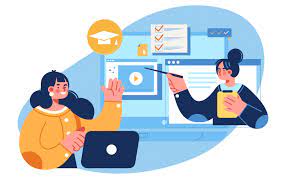Introduction
With education and corporate training rapidly entering the digital world, LMS development services have evolved into the building blocks of contemporary learning solutions. The need for custom platforms for virtual classrooms, content delivery, tracking of progress, and performance analytics has never been felt more. Organizations and schools are both spending on custom Learning Management Systems (LMS) that can handle the demand for scalable, intuitive, and effective training solutions.
LMS development services are more than a technology—they provide an easy flow of learning experiences that help in achieving the desired results. For onboarding new staff, training a remote sales team, or learning your new product, you need an LMS that’ll get the job done. In this post, we take a look at the eight vital stages of developing an LMS and consider why these eight services are so important to any organization that has long-term learning aspirations.
Step 1: List Out the Learning Goals
Way before there is a line of code in sight, the first step in LMS development services is to outline the learning objectives. What is the platform for? Who are the users — corporate employees, K-12 students, college students, and independent workers?
Clear objectives let us know which features really matter. For example, a corporate LMS might care most about tracking certifications and compliance, while an academic LMS might care most about quizzes, assignments, and forum discussions.
Step 2: Research On Competitive Market And Competitor Analysis
And after you’ve clarified your objectives, the first thing you can do is to examine the current market. Consider LMS software such as Moodle, Blackboard, or TalentLMS. What features do they offer? Where do they fall short?
The services of an LMS development company are sure to feature deep market analytical work that shows you empty spots in a features’ grid, your product can fill. And by learning what the competition is—and isn’t—doing and what people are looking for, you can make better decisions about the core features and structure of your LMS.
Move 3: Opt for the Right Technology Stack
Like another system, the technology base is crucial to the success of an LMS. Developers need to choose a tech stack that provides performance, scalability and security.
Types of technologies used in LMS. The following technologies have been adopted by many LMSs.
Frontend: React, Angular or Vue. js
Backend: Node. js, Django, or Laravel
Database: PostgreSQL, MongoDB or MySQL
Cloud Hosting: AWS, the Azure, or Google Cloud
Successful LMS development services enable customers to select the most suitable tools based on their objectives, budget, and future development.
Step 4: User Experience (UX/UI) Design
At the heart of a good LMS is the user interface and user experience. A clear, simple UR design enhances engagement, lowers the learning curve, and enables the users to focus on the content instead of the system.
It’s common when you outsource LMS development services, UX/UI designers prepare wireframes and interactive prototypes. This are then submitted to stakeholders to receive feedback before real work is started. The aim is not so much to address mobile as to include it: we want navigable ease, workflow clarity and responsive layout for all devices, mobile, in particular.
Step 5: Develop Core Features
After acquiring a strong foundation in relationships, the development team codes the main features of the LMS. Common items that are considered as mandatory may be similar to:
User registration and login:
- Role-based (admin | trainer | student) profile management.
- Development of the course and uploading content
- Video hosting and playback
- Quizzes and tests with interactive questions
- Monitoring Progress summary and report
- Messaging and notifications
For now, LMS development services are limited to modular architecture, wherein features are expandable in the future. There may also be APIs developed to connect the platform with third-party tools such as CRMs, HR platforms or payment gateways.
6: Testing and Quality Control
Testing is a crucial stage in the process of development. Bugs, crashes, and security vulnerabilities need to be flushed out and eliminated before the platform goes live.
Both manual and auto testing are used in LMS development services. They test the system in multiple devices and browsers, check the user flow, and handle high user volumes. Security audits are made to secure user data and to prevent unauthorized access.
7) Rollout and User Training
Following testing, the LMS is installed on the desired hosting environment. But the work goes beyond that. Workshop sessions are conducted for the system administrators, the educators, and the learners to ensure a smooth adoption.
Solid LMS development companies offer detailed documentation, user manuals, and even live online webinars or video tutorials. It should be designed to enable users to effectively navigate and use the platform from the start.
Step 8: Continued support and updates
Once deployed, maintenance is required to ensure long-term success. That could be something simple like a bug fix, a new feature, or making sure it works with a new device or browser, or helping to keep it secure.
Given the dynamic requirements as well as the fast-changing industrial specifications, this is unavoidable. Decent LMS development services should have relicensing agreements, performance monitoring, and feature upgrade packages, have, to allow clients to expand.
Conclusion
Developing a great Learning Management System is not just programming — it is a phased process that requires high-level strategy, user-focused design, and project management acumen.
The development of the LMS is key to transitioning from traditional learning to modern, scalable, interactive digital learning. By following a planned path—from setting goals to post-launch maintenance—businesses can create robust learning platforms that cater to today’s needs and are prepared for the future.
If you are a virtual charter school, a company with corporate global training or a startup e-learning business, custom LMS development services should be exactly what you need to start off with flying colors.


